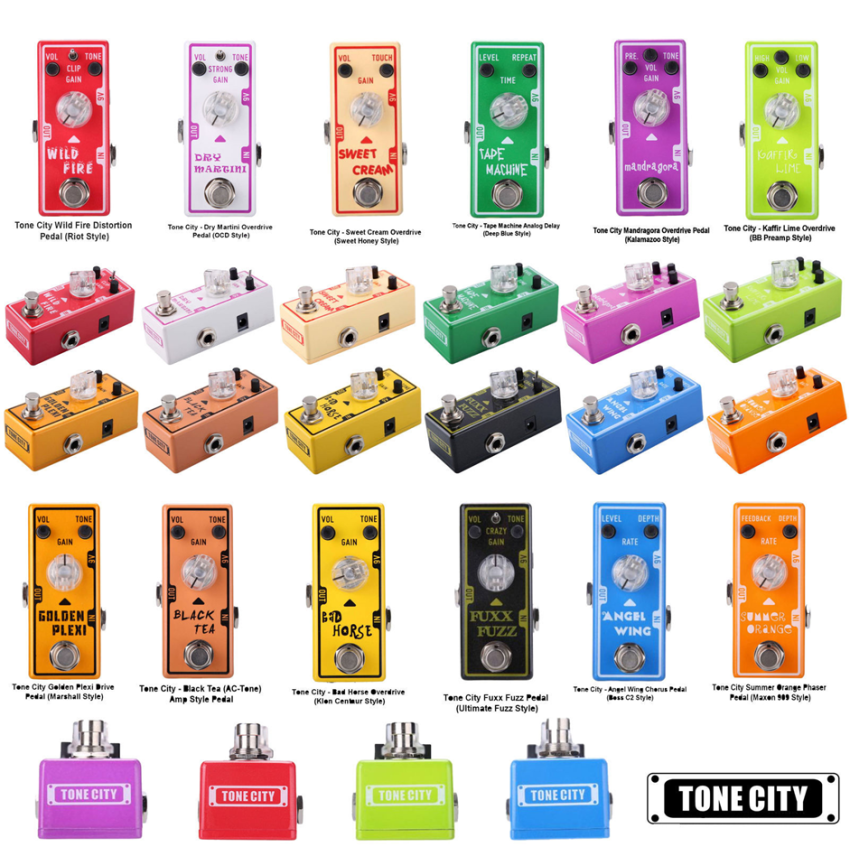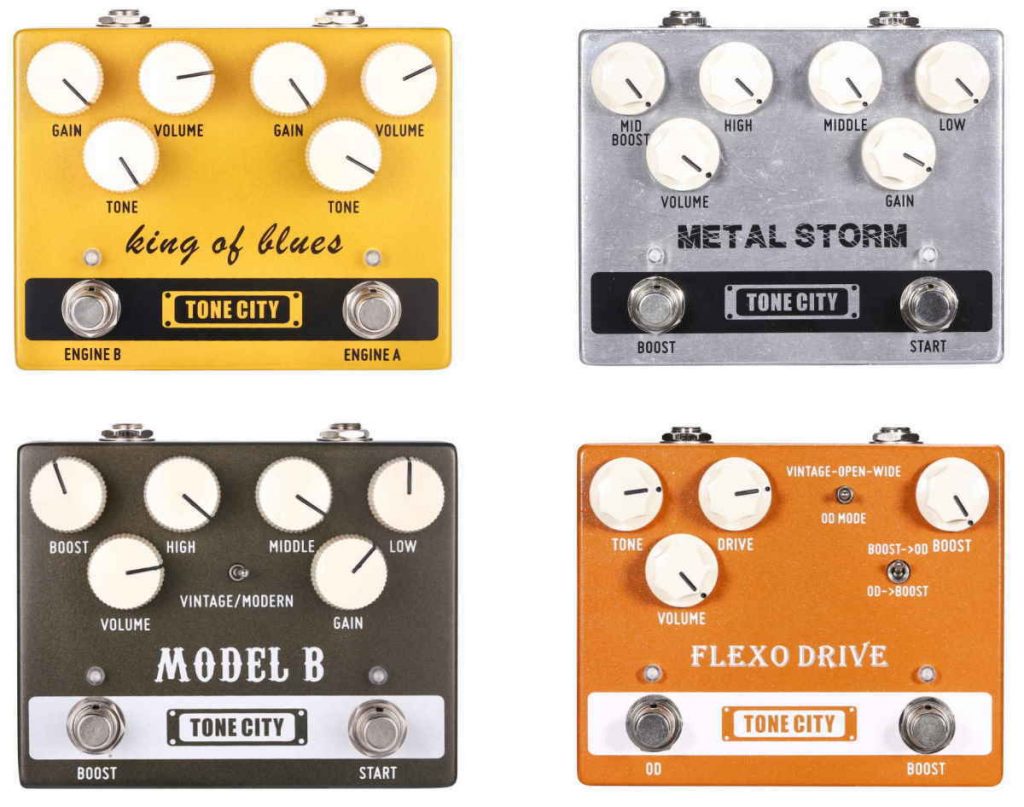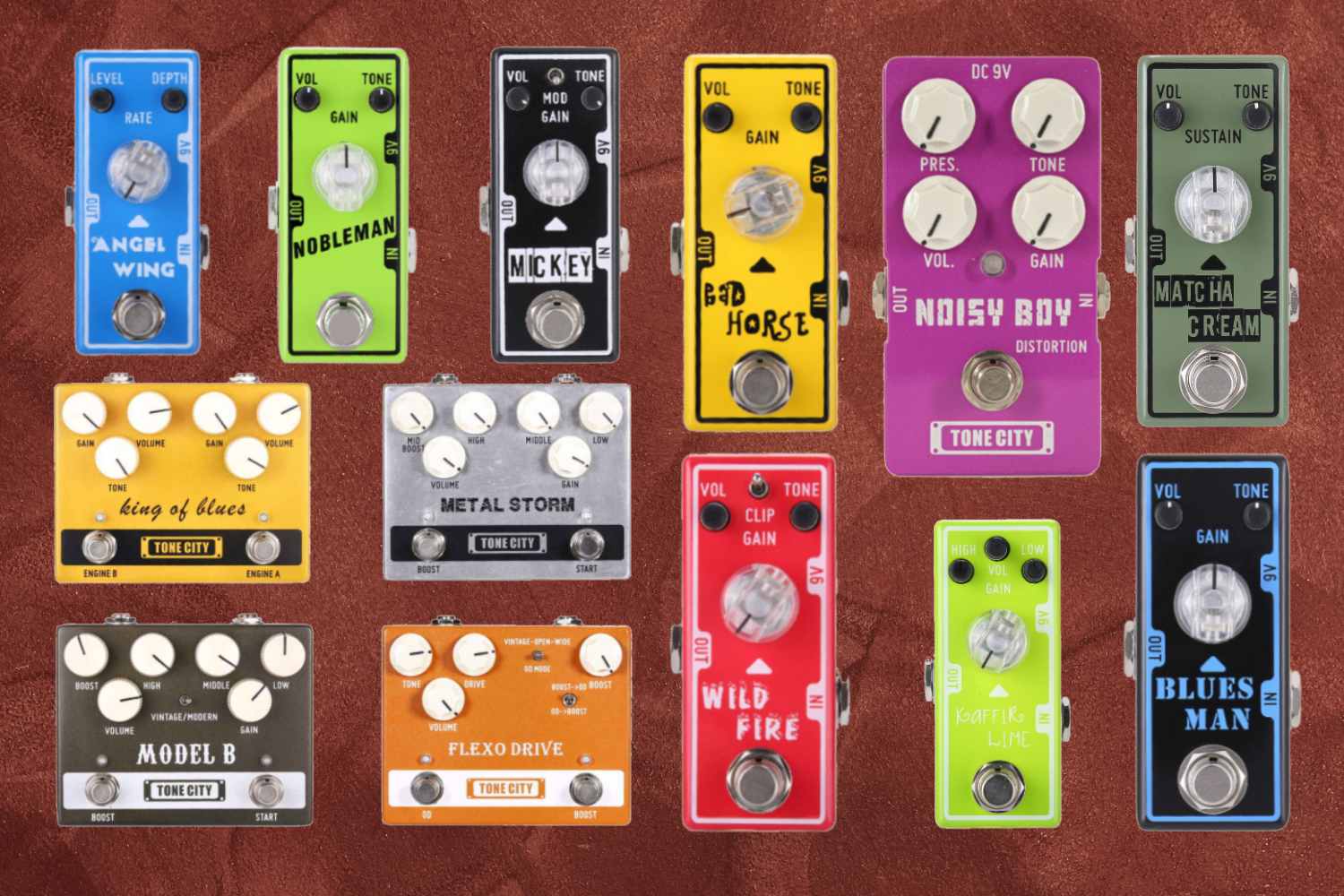How does one just start a pedal company? For Tone City Audio’s founder J. Wong, chief designer and a guitar and pedal geek since high school, it came out of musical necessity and economic frustration
J. Wong bought his first electric guitar and distortion pedal in 2005 while in high school, and quickly found himself discouraged by the high cost of pedals: how are you supposed to build your dream rig when you’re in school and gear is too expensive?
It was a problem that stuck with him through the rest of his time at high school. After heading off to university to study Business Automation Systems, he had one of those great ‘ah-ha!’ moments: why don’t I make pedals myself? He spent all his spare time reading books and resources in English about how to make pedals, and got so into it that it took six months longer than planned to finish his major. Whoops.
Read all the latest features, columns and more here.
The first pedal he designed and built was an overdrive inspired by that green pedal we all know, and it quickly drew attention on guitar forums at the time. This led to diving head-first into the pedal design world after university, designing over 40 products for another company, which players loved the sound of but were unhappy with the build quality. He realised that if he wanted his pedal designs to be built to the standards he needed, he’d have to go out on his own. And that’s why Tone City was founded in 2014. Today, Tone City Audio is distributed by EGM Distribution in Melbourne, and you can find them at many dealers as well as at Eastgate Music in Kew (where Marcello will be happy to drop his impressive knowledge of the range).
The company has grown steadily, initially with a modest 49 square metre facility and now occupying 700 square metres, scaling up as the company grows. Each product is based on J. Wong’s understanding of what players want and how to get it. Tone City Audio also confers with dealers and distributors to make sure the pedals give players what they need. The company believes music isn’t a luxury but a necessity, and this drives everything they do. Inside, the pedals are hand-wired with NOS components, BBD chips, silicon transistor styled circuits, classic JFETs, OTA, and analogue/digital hybrid technology.
The designs are inspired by modern boutique pedals and famous classics, with names like Dry Martini Overdrive, Wild Fire Distortion, Mad Stone, Golden Plexi (you can guess what that one does), Angel Wing Chorus, and the hilariously named Fuxx Fuzz among the current range of designs. No less a talent than Greg Koch is quoted as saying about a Tone City stomp box, “holy carumbas, that’s a good little pedal. Dog gone it!” (We’re not sure which pedal he said that about, but this writer had a similar reaction plugging in the Blues Man pedal, which is inspired by a certain UK amp with ‘Blues’ in the model name. You can probably figure it out from the name but you’ll definitely recognise it in the tone).

There was a clear shift in the pedal market starting quietly about 15 years ago and growing to be a big part of how we play today: the micro pedal. While stomp boxes had been marketed with words like ‘compact’ since the late ‘70s, the new super-slim form factor became ubiquitous. It wasn’t just the space-saving benefits, although you can get away with a much smaller pedal board with a handful of these little baby stompers. It was also the fact that with each pedal taking up less space, you could fit more of them on your pedalboard. The majority of Tone City’s pedals are micro-sized units.
With vibrant colours, high-contrast graphics (which make it easier to see what’s what onstage), and status LEDs built into the control knobs. The pedals are designed to run on power supplies only (a battery would interfere with the design brief). Most of Tone City’s micro pedals feature an array of two or three smaller potentiometers above the main status pot, or the odd micro-switch, but the Tiny Spring reverb is beautiful in its one-control simplicity.
It’s not all teeny tiny micro pedals though: there are other stompers in the range which use a larger (but still compact) form factor to pack more versatility and control into the Tone City format. For example, the Flexo Drive is an overdrive and boost, with each effect selectable individually and with an effect-order switch to select which effect feeds into the other. And the Model B is inspired by US high-gain amps of the tread plate variety, complete with Vintage/Modern switch and a selectable boost. And the Model V is inspired by a classic UK Class A combo amp but with selectable High Gain and Crunch modes to significantly extend the gain of this legendary amp to what ‘May’ be practically regal levels.

And there’s also a series of pedals in between those two sizes, a more traditional stomp box form factor employed for pedals such as the Funny Boy Auto Wah, the Blue Crystal Echo (which brings you the sound of a BBD pedal with 600ms and 1100ms Short and Long delay modes. And of course there’s the Green Tube Overdrive, which traces its lineage all the way back to that original pedal which J. Wong DIY’d back at the very beginning. The Silver Angel Chorus is another unit that traces its history back to J. Wong’s early designs; it’s an all-analog circuit based on a famous BBD chip chorus/vibrato pedal, and the prototype was made 14 years ago. Since then, many of the core components have ceased production but Tone City sourced enough NOS components to bring the design to life in this series.
Everything about Tone City Audio pedals feels like it was designed by a guitar player, and you can feel that passion and sense of fun and creativity when you step on the switch and let rip with the riffs.
Head to Tone City Audio for more information. For local enquiries, reach out to EGM Distribution.







